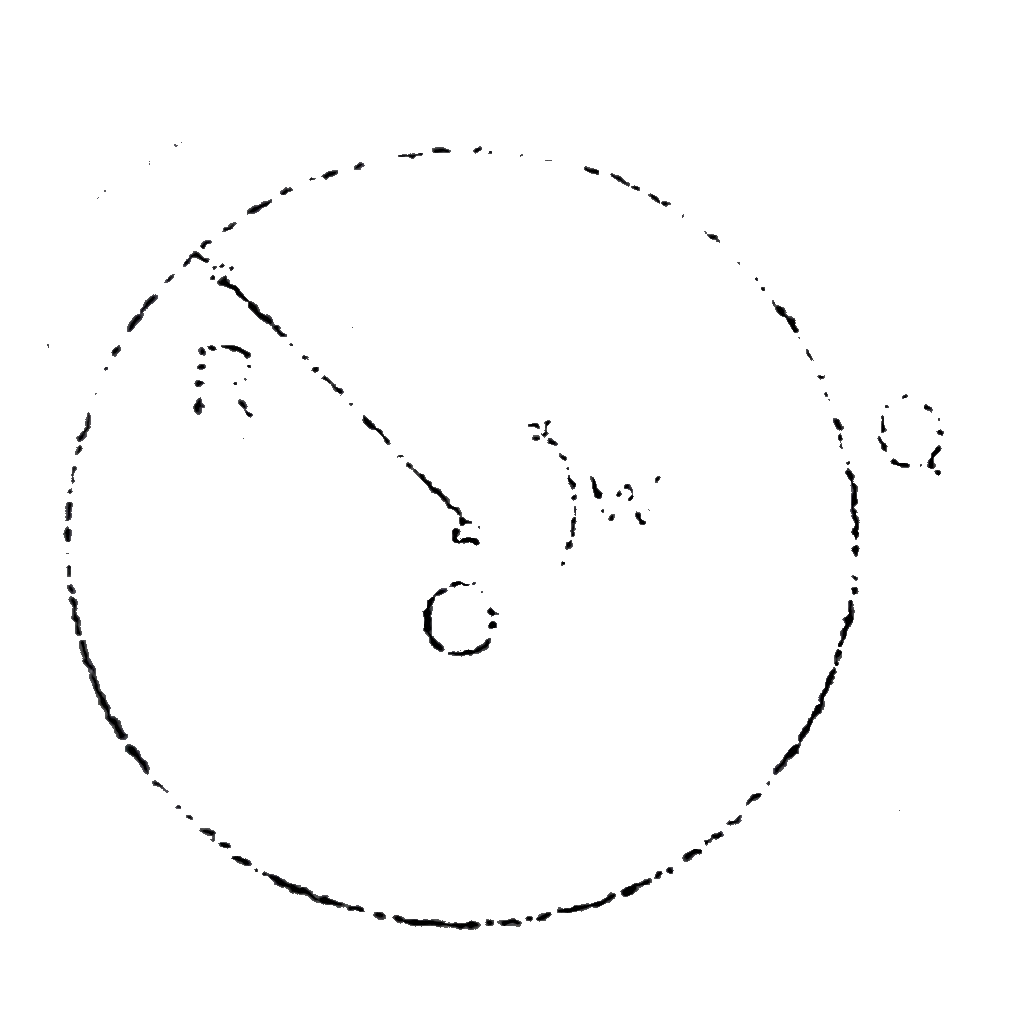A long cylinder of radius a carrying a uniform surface charge rotates about its axis with an angular velocity ω. Find the magnetic field energy per unit length of the cylinder if the linear charge density equals λ and μ=1.
The correct Answer is:A
To solve the problem of finding the magnetic field energy per unit length of a rotating charged cylinder, we can follow these steps:
Step 1: Understand the Problem
We have a long cylinder of radius a carrying a uniform surface charge density that rotates about its axis with an angular velocity ω. The linear charge density is given as λ, and we need to find the magnetic field energy per unit length of the cylinder.
Step 2: Relate Surface Charge Density to Current
The surface charge density σ can be related to the linear charge density λ as follows:
λ=σ⋅(2πa)
where a is the radius of the cylinder.
When the cylinder rotates, the surface charge creates a current I. The current due to the rotating charge can be expressed as:
I=λ⋅ω⋅a
Step 3: Calculate the Magnetic Field Inside the Cylinder
Using Ampère's law, the magnetic field B inside a long cylindrical conductor carrying a current can be calculated. The magnetic field at a distance r from the axis of the cylinder (where r<a) is given by:
B=μ0I2πr
Substituting for I:
B=μ0(λ⋅ω⋅a)2πr
Step 4: Calculate the Magnetic Field Energy Density
The energy density u of the magnetic field is given by:
u=B22μ0
Substituting for B:
u=12μ0(μ0(λ⋅ω⋅a)2πr)2
This simplifies to:
u=μ0(λ2⋅ω2⋅a2)8π2r2
Step 5: Calculate the Total Magnetic Field Energy per Unit Length
To find the total magnetic field energy per unit length W, we need to integrate the energy density over the volume of the cylinder:
W=∫a0u⋅(2πr⋅dr)
Substituting u:
W=∫a0μ0(λ2⋅ω2⋅a2)8π2r2⋅(2πr)dr
This simplifies to:
W=μ0(λ2⋅ω2⋅a2)4π∫a01rdr
The integral ∫a01rdr diverges, but we can evaluate it as:
W=μ0(λ2⋅ω2⋅a2)4πln(ar0)
where r0 is a small inner radius to avoid divergence.
Final Result
The magnetic field energy per unit length of the cylinder is:
W=μ0λ2ω2a24π
We have a long cylinder of radius a carrying a uniform surface charge density that rotates about its axis with an angular velocity ω. The linear charge density is given as λ, and we need to find the magnetic field energy per unit length of the cylinder.
The surface charge density σ can be related to the linear charge density λ as follows:
λ=σ⋅(2πa)
where a is the radius of the cylinder.
I=λ⋅ω⋅a
Using Ampère's law, the magnetic field B inside a long cylindrical conductor carrying a current can be calculated. The magnetic field at a distance r from the axis of the cylinder (where r<a) is given by:
B=μ0I2πr
Substituting for I:
B=μ0(λ⋅ω⋅a)2πr
The energy density u of the magnetic field is given by:
u=B22μ0
Substituting for B:
u=12μ0(μ0(λ⋅ω⋅a)2πr)2
This simplifies to:
u=μ0(λ2⋅ω2⋅a2)8π2r2
To find the total magnetic field energy per unit length W, we need to integrate the energy density over the volume of the cylinder:
W=∫a0u⋅(2πr⋅dr)
Substituting u:
W=∫a0μ0(λ2⋅ω2⋅a2)8π2r2⋅(2πr)dr
This simplifies to:
W=μ0(λ2⋅ω2⋅a2)4π∫a01rdr
The integral ∫a01rdr diverges, but we can evaluate it as:
W=μ0(λ2⋅ω2⋅a2)4πln(ar0)
where r0 is a small inner radius to avoid divergence.
The magnetic field energy per unit length of the cylinder is:
W=μ0λ2ω2a24π
Topper's Solved these Questions
- ELECTROMAGNETIC INDUCTIONBook:RESONANCE ENGLISHChapter:ELECTROMAGNETIC INDUCTIONExercise:Exercis-3 PART 3
Explore 16 Videos
- ELECTRODYNAMICSBook:RESONANCE ENGLISHChapter:ELECTRODYNAMICSExercise:Advanced level problems
Explore 31 Videos
- ELECTROSTATICSBook:RESONANCE ENGLISHChapter:ELECTROSTATICSExercise:HLP
Explore 40 Videos
Similar Questions
A thin uniform ring of radius R carrying charge q and mass m rotates about its axis with angular velocity ω. Find the ratio of its magnetic moment and angular momentum.
View SolutionA non-conducting disc having unifrom positive charge Q, is rotating about its axis with unifrom angular velocity ω.The magnetic field at the centre of the disc is.

View SolutionA ring of mass m and radius R is given a charge q. It is then rotated about its axis with angular velocity ω.Find
(iii)Magnetic moment of ring.
View SolutionA ring of mass m and radius R is given a charge q. It is then rotated about its axis with angular velocity ω.Find
(ii) Magnetic field produced at the centre of ring.
View SolutionA thin disc of radius R has charge Q distributed uniformly on its surface. The disc is rotated about one of its diametric axis with angular velocity ω. The magnetic moment of the arrangement is
View SolutionA non-conducting thin disc of radius R charged uniformly over one side with surface density s rotates about its axis with an angular velocity ω. Find
(a) the magnetic induction at the centre of the disc,
(b) the magnetic moment of the disc.
View SolutionA conducting ring of radius r having charge q is rotating with angular velocity ω about its axes. Find the magnetic field at the centre of the ring.

View SolutionA conducting ring of radius r having charge q is rotating with angular velocity ω about its axes. Find the magnetic field at the centre of the ring.

View SolutionA ring of mass m and radius R is given a charge q. It is then rotated about its axis with angular velocity ω.Find
(i)Current produced due to motion of ring
View SolutionThere is a ring of radius r having linear charge density λ and rotating with a uniform angular velocity ω. the magnetic field produced by this ring at its own centre would be
View Solution

